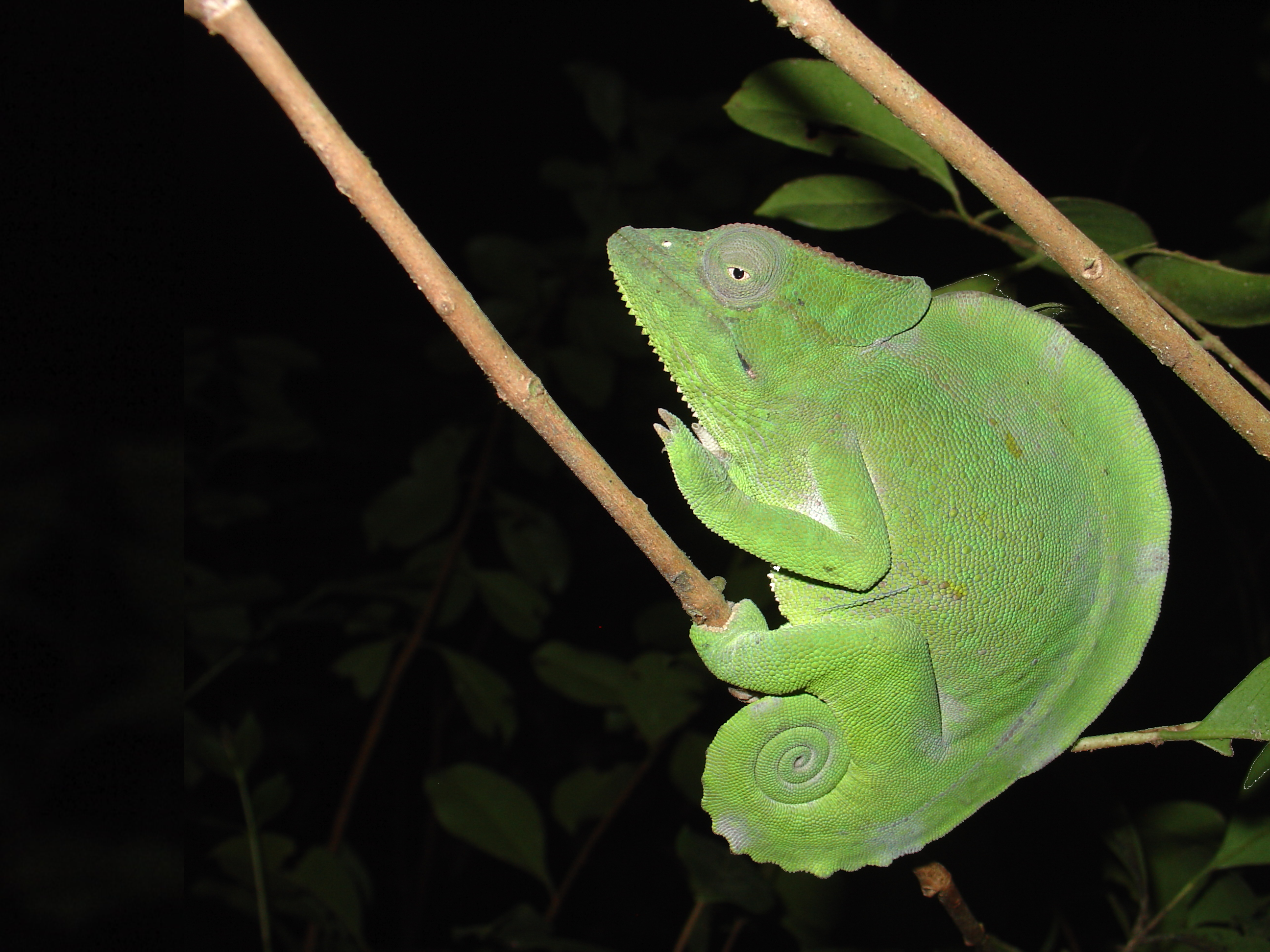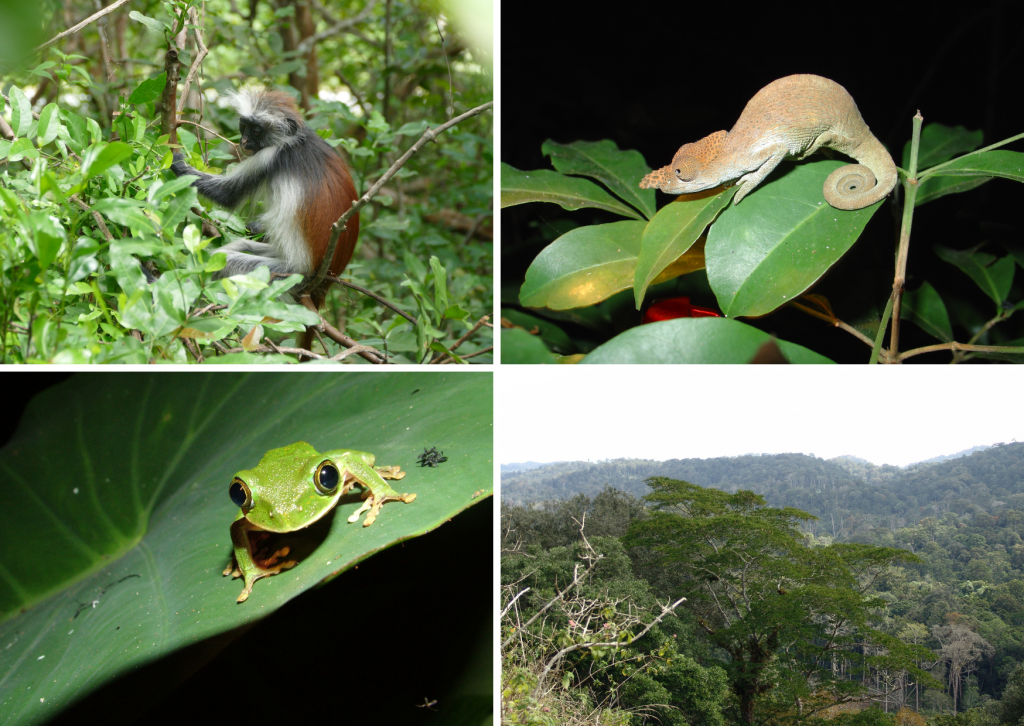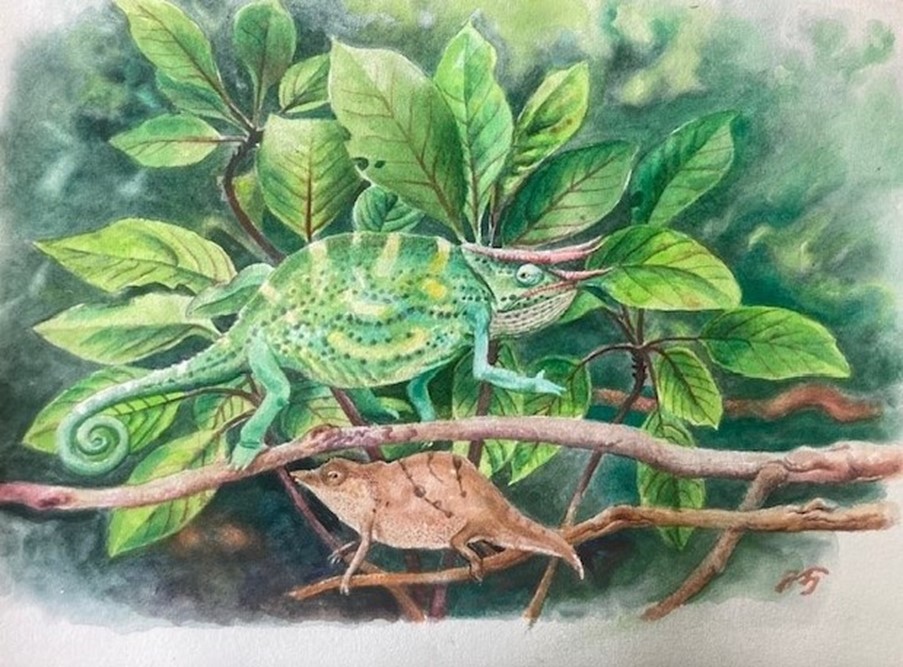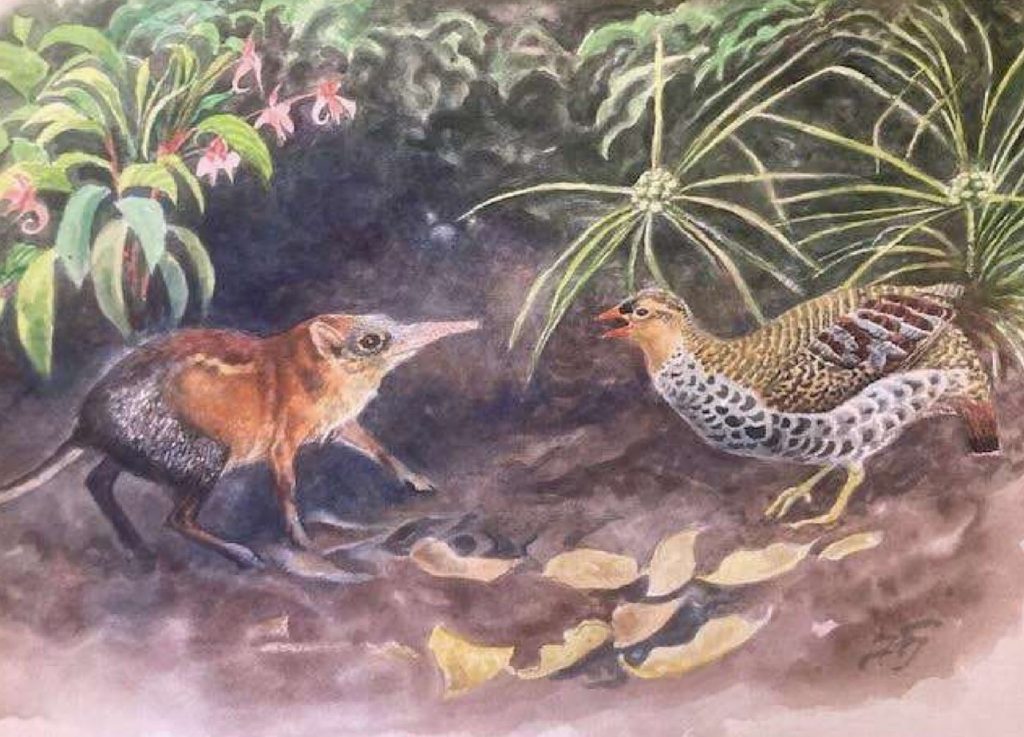News
Studies reveal conservation successes for wildlife and habitats in Tanzania

Story | Jun 2024
Two new studies show promising trends for Tanzania’s rare creatures and protected habitats. Regulations and management are having a positive impact on the trade of chameleons and effectiveness of forest nature reserves, researchers have found, helping to safeguard the east African country’s rich biodiversity.
However, the authors of both studies, which were published in the peer-reviewed journal PLOS One, caution that ongoing challenges remain in both the regulation of the chameleon trade and management of protected forests.
Scientists at the UN Environment Programme World Conservation Monitoring Centre (UNEP-WCMC) contributed to the research. Professor Neil Burgess, Chief Scientist at UNEP-WCMC, authored both papers. Professor Burgess has studied the biodiversity of eastern Africa for more than 30 years and has worked with governments and non-government organisations on conservation policy and field projects.
Tanzania contains six of 25 global biodiversity hotspots and is a global centre of chameleon diversity. Many of these chameleons are found nowhere else on Earth, and nearly 40 per cent are threatened with extinction. The country’s Nature Forest Reserves include evergreen highland and lowland rain forests, and deciduous woodlands. They are areas of exceptional importance for global biodiversity, home to many of the Tanzania’s threatened chameleons, as well as numerous species of rare frogs, birds, mammals and plants. These include the iconic Africa violets and red colobus monkeys.
Tanzania’s rich biodiversity is under pressure on multiple fronts. To help, scientists and policymakers need to understand how well current regulations and management approaches are working.

Significant fall in exports of wild chameleons
Chameleons face multiple threats, as habitat loss and climate change reduce their forest home. Another major problem is the collection of wild animals for the international pet trade.
The new research into the international trade in chameleons focuses on Tanzania, as the largest exporter of chameleons for the pet trade until 2016. It finds that there was a “significant” decline in international trade of live chameleons over the previous decade, both globally and from Tanzania.
Data shows that 12,526 wild chameleons were traded globally in 2019, a fall of 75 per cent from the peak of 50,011 recorded in 2003. Over the decade there has been an increase in captive-bred chameleons, and a slight overall decline in ranched specimens (where chameleons are released into the wild, allowing them to reproduce, and are later recaptured).
Since 2016 Tanzania has banned the export of all live wild-sourced animals. The Convention on International Trade in Endangered Species of Wild Fauna and Flora (CITES) also regulates the movement of 202 chameleon species across international borders.
The researchers are cautiously optimistic that these regulations have been effective in shrinking the trade, and say that the data indicates that the activity has not simply shifted elsewhere.
However, the authors note, a lack of data on under-recorded illegal trade and limited understanding of domestic supply chains and wild populations, mean there is much that we do not know about the overall impact of harvesting and trading chameleons in Tanzania. During their fieldwork and conversations with Tanzanian experts the researchers found little evidence that wild-sourced animals were still being traded; however in 2021 74 chameleons were found in a suitcase at Vienna airport that had been smuggled from Tanzania.
It was wonderful to see these tentatively optimistic results in the data. The signs are there that the hard work by conservationists and regulators in Tanzania, working with the international community, is having real results and lessening the pressure on these fascinating animals.
However, our analysis also highlights where we need to go further. Most of the reported trade in chameleons from Tanzania is going to rich developed countries like the US, Germany and Japan. To disincentivise illegal trade we need transparent supply chains and ethical consumption in these countries.
Professor Neil Burgess, Chief Scientist at UNEP-WCMC

To generate the results, the researchers applied three different approaches to collect relevant data. Firstly, they used the CITES Trade Database. This contains the international trade records for CITES-listed species reported by the 184 CITES Parties. UNEP-WCMC’s Professor Burgess advised on the use of the CITES Trade Database, which is maintained by UNEP-WCMC on behalf of the CITES Secretariat.
Secondly, they searched online marketplaces to find out which species are being sold, which are in demand and price range for different species. Thirdly, they also conducted fieldwork in Tanzania in 2019, interviewing villagers in areas where chameleons are found to learn about the scale of harvesting, who is involved, how the trade works and which species are most desirable. Conservationists, academics, NGOs and government authorities in Tanzania were also consulted.
Professor Burgess helped to design the study and supervised the field work undertaken in 2019 as a part of the TRADE Hub project. This five-year research project led by UNEP-WCMC focused on the environmental and socioeconomic impact of trading commodities, with case studies in Tanzania. Professor Burgess also supervised Maxim Isaac, the lead author who completed this work as part of his master’s degree.
The government’s ban on the trade of live wild animals has significantly positively impacted conservation efforts in Tanzania and surrounding areas, particularly in regions heavily involved in this trade. The communities affected by the ban have shown resilience as well. According to a study by a TRADE Hub master’s student at Sokoine University of Agriculture, 90 per cent of the communities previously engaged in the trade have transitioned to alternative income-generating activities, such as farming spices.
However, a research gap still needs to be addressed to understand the potential of the trade and its connection to the population dynamics of rare and threatened chameleon species only found in Tanzania. This understanding is crucial for establishing the maximum number of individuals that can be removed from the wild without negatively impacting species’ survival.
Dr Joseph Rajabu Kangile and Professor Reuben Kadigi, Sokoine University of Agriculture in Tanzania
Protected forests are being managed more effectively
Professor Burgess also recently authored the first assessment of the effectiveness of Tanzania’s Nature Forest Reserves (NFRs). NFRs are protected forest areas of exceptional biological importance. They contain more than 700 plant and animal species that are native to Tanzania, at least half of which are threatened with extinction. Many of these are endemic, and found nowhere else on Earth in the wild.
Professor Burgess has worked in Tanzania and with the authorities there for more than 20 years, with a focus throughout this period on the biological study, prioritisation and management of the key forests for conservation. This has included several years working with authorities to create the network of Nature Forest Reserves described in this paper.
The study found that improved management and increased investment have reduced some of the critical threats to these important protected areas.

The researchers analysed 21 NFRs where data was available, out of 26 in total. To measure their effectiveness, the researchers used the Management Effectiveness Tracking Tool. This uses datasheets and an assessment form to input information on a range of social, environmental and economic issues. The tool then generates a score for a protected area, out of a maximum of 99.
This score rose from 55 per cent in 2015 for the 11 NFRs where data was available, to 87 per cent in 2021 for 17 NFRs evaluated. The researchers also found that over time the proportion of endemic species whose ranges were not covered by NFRs decreased. Only 5 per cent of endemic mammals’ ranges did not fall under the protection of NFRs, and 10 per cent of endemic reptiles’ ranges.
To further understand the effectiveness of NFRs, the researchers analysed forest disturbance in four protected areas. While generally numbers of felled trees declined between 2001 and 2019, the authors caveat that the real picture is likely more complicated. For example, there may be fewer suitable trees to harvest now. A greater density of live tree poles may indicate regrowth after being cut, they caution. Indeed, they note anecdotal evidence of considerable disturbance to reserves, including from hunting. Udzungwa forest partridges, for example, are no longer found in the Nyumbanitu forest within the Kilombero NFR, where they were last sighted in 2016.
Professor Burgess helped to write the paper and supervised Claire Ract, a master’s student whose tenacity and dedication resulted in her being the lead author on the paper.

The researchers make several recommendations to further improve NFRs’ effectiveness:
Since 1997 Tanzania has taken great strides to protect its biodiversity by declaring a network of Nature Forest Reserves. For the first time, our research paints an overall picture of how this approach is working. It’s clear that, especially when they are properly funded, NFRs do safeguard the rare and unique wildlife that Tanzania is world-renown for. Further improving their effectiveness to overcome the problems our study identifies will require rich countries and the private sector to step up funding further – as laid out in the Biodiversity Plan.
Professor Neil Burgess, Chief Scientist at UNEP-WCMC
Main image: A chameleon in the Amani Nature Reserve of Tanzania’s East Usambara Mountains (Image: Neil Burgess)
Have a query?
Contact us
communications@unep-wcmc.org
